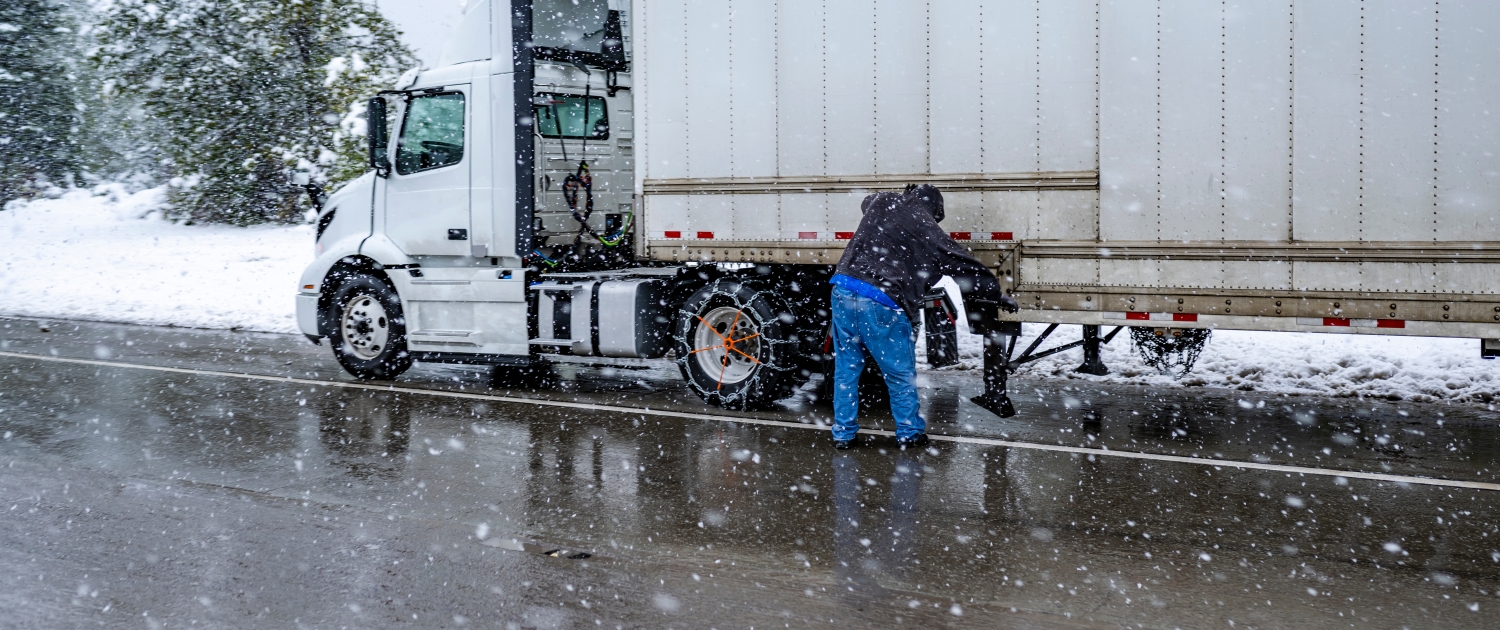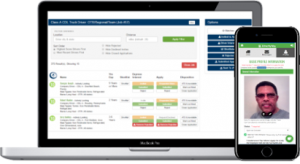
Living where you work is one of the many adjustments trucker drivers will make once they begin their career driving. One of the best ways to adapt to this situation and create a welcoming environment is to take some initiative to make the truck feel like a home away from home. At Drive My Way, we love compiling tips for truck drivers to help them with their life and career on the road.
What are Some Creative Ways Truckers Have Made Their Truck Home?
Some of the best tricks and tips we have heard from truckers about making their truck feel like home are outlined below.
Create a Library: If you like to read, you can create a mini library in your cab to house a selection of books or magazines. Add a custom reading light and you are ready for some important downtime after a long day. Make sure you also have your favorite books on tape and podcasts on deck to help pass the time during your drives.
Dedicate a Space for Entertainment: If you prefer to watch movies, TV shows, or play games, investing in an entertainment space is the perfect way to feel right at home while you’re on the road. Some of the most popular items we have heard truckers adding to their entertainment space include a TV, DVD player, satellite radio, or gaming console. It’s important to remember though, the more electronics and appliances you have onboard, the more important it is to have an inverter as well. An inverter will help spread out the voltage for everything you have plugged in including your TV, phone, tablet, or toaster.
Add Personalization: Nothing is going to make your truck feel like home more than making it your space. Create a wall to hang up your children’s drawings, photos of friends and family, and memorabilia you collect on your travels. Get creative with wallpaper, steering wheel and seat covers, accent pillows and seat cushions, area rugs, and more! We’ve even seen truck drivers who create a little spa area with relaxing music and an essential oil diffuser!
Give Yourself a Kitchen: Even though the space in a cab is limited, there are plenty of ways to make a kitchen area that allows you to make tasty meals and snacks. Many truckers make sure to have their favorite appliances onboard including a mini refrigerator (a perfect place for all those magnets you collect at truck stops), microwave, crockpot, coffee maker, toaster, or even an air fryer! Don’t forget to bring along some of your favorite recipes also.
Make Your Sleeping Area an Oasis on Wheels: Not only is your truck a place to work and eat, but it is also your bedroom. Some of the best ideas we have seen from truckers on how to make their sleeping area inviting include adding curtains to give the space a more private feel, and if you’re really sensitive to light, blackout curtains are the way to go. You can make your bed the perfect fit for every season by having nice cool, cotton sheets for the summer and super soft, flannel ones for the winter. You can also invest in an electric blanket, comfortable pillows, and any other necessities that will help you get your best rest. You can also add mood lighting and a sound machine to create serenity to help you doze off.
Rotate Your Theme: One way to keep the excitement going with your truck personalization is to have a new theme and matching decorations that you can rotate throughout the year. You can go patriotic for the 4th of July, spooky for Halloween, and merry for Christmas. From holiday lights to bedspreads, you can make your truck feel close to home.
If you drive a company owned truck, always make sure to check with them before making any modifications to the interior or exterior of the vehicle. While taking any of these steps can give your truck a homier feel, it’s important to remember that if you feel lonely or isolated, get in touch with family and friends, or be social with fellow truckers at stops. A good conversation is an excellent way to break up the monotony of being alone while driving. With a little creativity, your cab can transform into a tiny home rather than feeling like just the back of your truck.
Do you have a decked-out rig, full of personality? We want to see all the creative ways you have made your truck and cab match your unique needs and style. Connect with us on Facebook, Instagram, or Twitter to show off your truck and tell us your story.





 Intermodal trucking can be a great option for truck drivers who are looking for a new job over the road and want to try something different than typical dry and reefer hauling. Here are 3 perks of being an intermodal trucker, along with quotes from actual intermodal drivers about what the job is like.
Intermodal trucking can be a great option for truck drivers who are looking for a new job over the road and want to try something different than typical dry and reefer hauling. Here are 3 perks of being an intermodal trucker, along with quotes from actual intermodal drivers about what the job is like. If consistent home time and a healthy work/life balance are important to you, intermodal trucking might be a good choice for your next driving job. Drivers will tell you that the biggest benefit of this line of work is the consistent schedule and shorter routes. Drivers will usually complete at least one route, (most times more) in a single shift and be home every night.
If consistent home time and a healthy work/life balance are important to you, intermodal trucking might be a good choice for your next driving job. Drivers will tell you that the biggest benefit of this line of work is the consistent schedule and shorter routes. Drivers will usually complete at least one route, (most times more) in a single shift and be home every night. The shipping containers that intermodal truckers haul move from transport vehicle to transport vehicle without being unpacked or broken down (With the exception of inspections by customs officials). They stay packed as is and sealed from the time they leave, until they get to their destination.
The shipping containers that intermodal truckers haul move from transport vehicle to transport vehicle without being unpacked or broken down (With the exception of inspections by customs officials). They stay packed as is and sealed from the time they leave, until they get to their destination. Most intermodal drivers find the real perk of the job to be the flexibility that it provides them. We talked to another intermodal truck driver, Ritsuko, and she shared what she loves about intermodal trucking, including seeing the country and making money.
Most intermodal drivers find the real perk of the job to be the flexibility that it provides them. We talked to another intermodal truck driver, Ritsuko, and she shared what she loves about intermodal trucking, including seeing the country and making money.
 Though getting a Class A CDL will open the
Though getting a Class A CDL will open the  With a Class B CDL, a trucker can drive any vehicles endorsed for Class B or Class C. Some of these vehicles are:
With a Class B CDL, a trucker can drive any vehicles endorsed for Class B or Class C. Some of these vehicles are: To hold a Class B CDL, you only need to be 18 years old. This is actually true for a CDL A as well, but many companies will not hire
To hold a Class B CDL, you only need to be 18 years old. This is actually true for a CDL A as well, but many companies will not hire  If you’re a truck driver looking to stay close to home, a Class B CDL might be a great option for you, since most CDL B jobs only run locally. This means that if you’re planning on getting your Class B CDL, you should be prepared for jobs as a mover, delivery driver, bus driver, or
If you’re a truck driver looking to stay close to home, a Class B CDL might be a great option for you, since most CDL B jobs only run locally. This means that if you’re planning on getting your Class B CDL, you should be prepared for jobs as a mover, delivery driver, bus driver, or 


 Trucker drivers are an interesting bunch. And for good reason—they have an interesting job! Hollywood has paid attention to the trucker life over the years, and made many movies about trucking, truckers, or the over the road lifestyle. For all the movies made about trucking, we’ve narrowed things down to our favorites, and
Trucker drivers are an interesting bunch. And for good reason—they have an interesting job! Hollywood has paid attention to the trucker life over the years, and made many movies about trucking, truckers, or the over the road lifestyle. For all the movies made about trucking, we’ve narrowed things down to our favorites, and 






